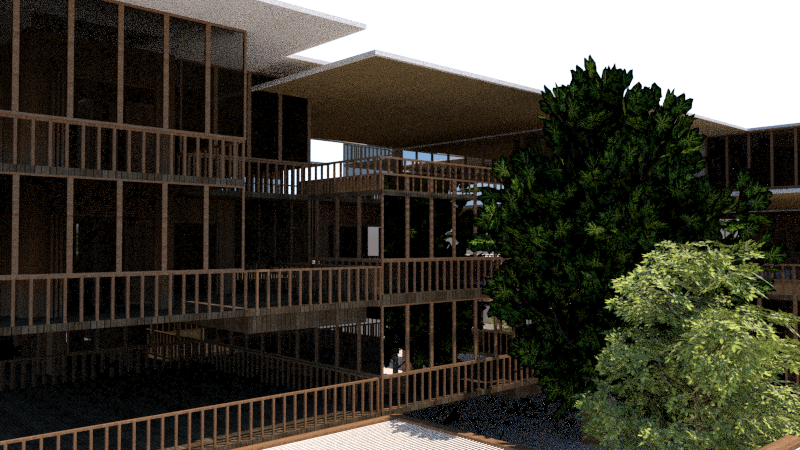
A new look on a a Tropical Residential Scheme where 40% 0f the building program is used for Recreational and Commercial Activities.
LOCATION & SITE
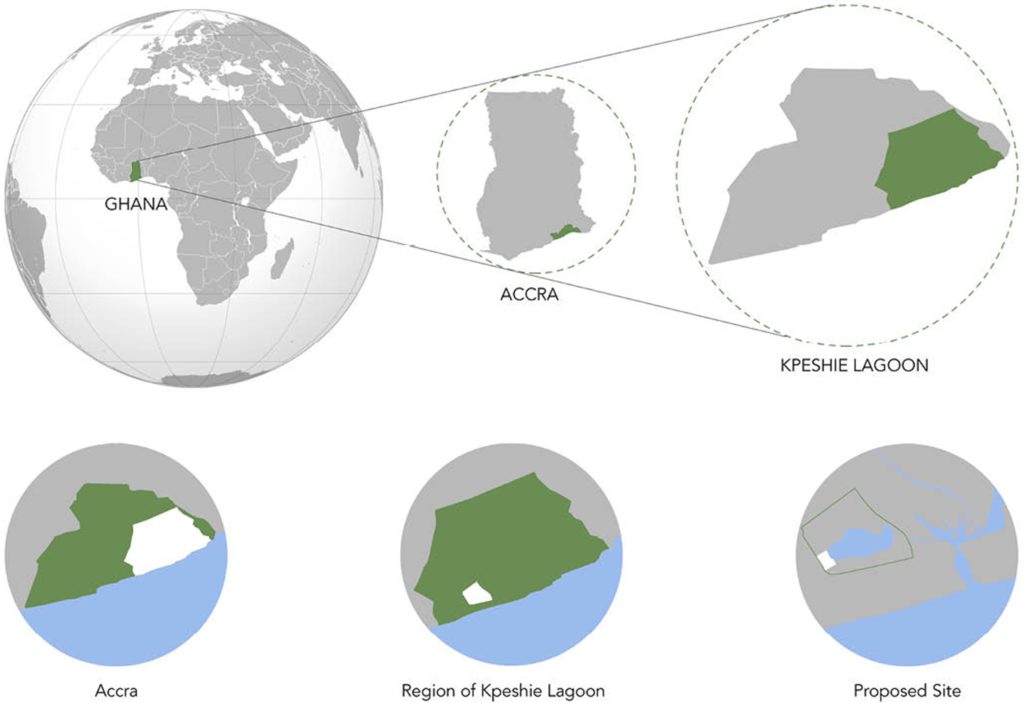
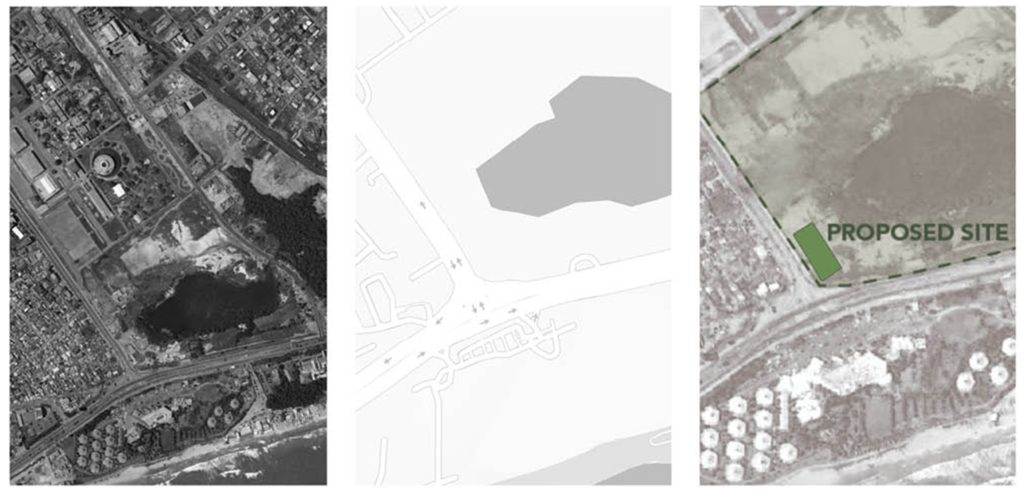
The site chosen is that of Kpeshie Lagoon, in Accra, Ghana. The site over looks the lagoon and is surrounded by trees. The site is close to the sea and is surrounded by the fishermen community. The site is a peri urban environment covering an area of 4000sq.m. The site was formerly a large site for the fishermen community. the goal is to bring back the community to the site and aid in the restoration process.
CLIMATE ANALYSIS

GHANAIAN CULTURE & ARCHITECTURE

CASE STUDIES
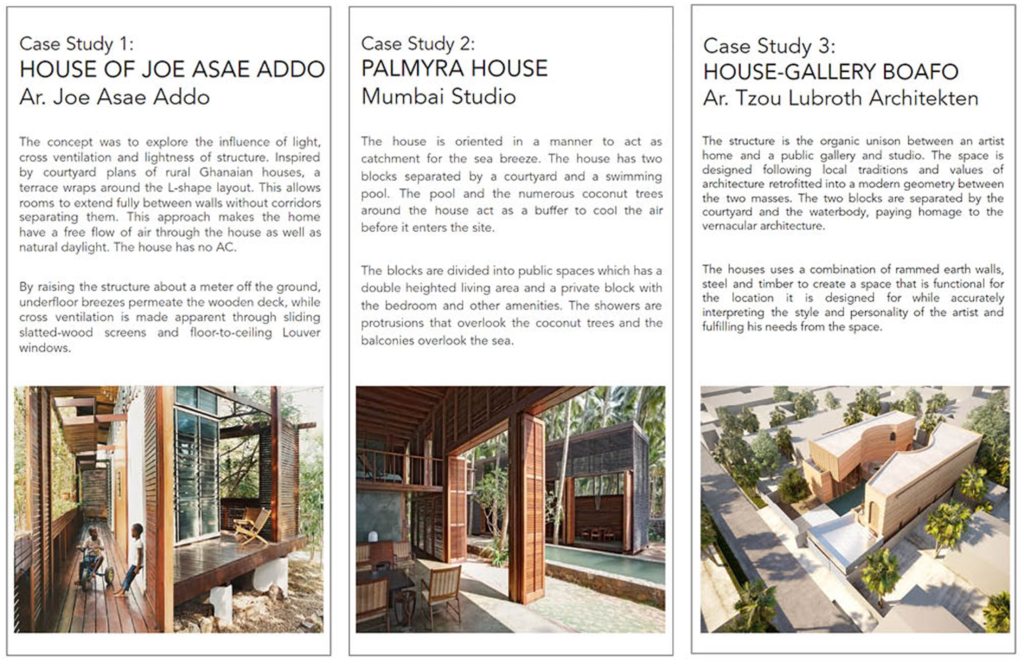
DESIGN STRATEGIES

VENTILATION:
Being the primary strategy used in the design, most issues can be solved by providing ample ventilation in the design. Ventilation caters to Humidity, Cooling, Air Circulation and Indoor Comfort.
SHADING:
With the large overhangs the sun shading allows for cooler interior spaces and also ensure that the heavy rains do not enter the house.
COURTYARDS/ PATIOS:
The courtyards and patios serve the purpose of creating a cyclic coolin system and also aids ventilation. the large patios ensures that the indoor rooms are not in direct contact with the harsh heat.
STILTS:
The Stilts ensures that the heat from the land does not increase the temperature of the house through conduction and allows for wind to flow.
PRE DESIGN CLIMATIC PROTOTYPE
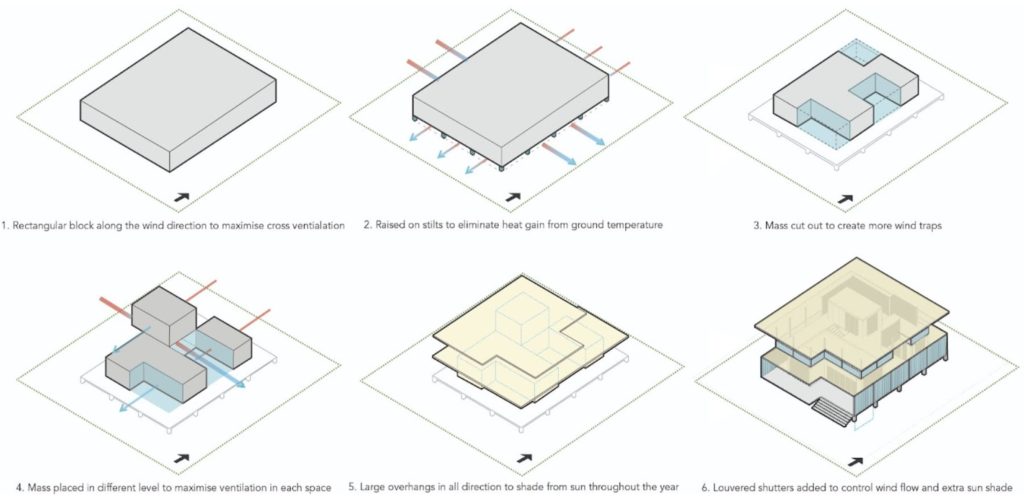
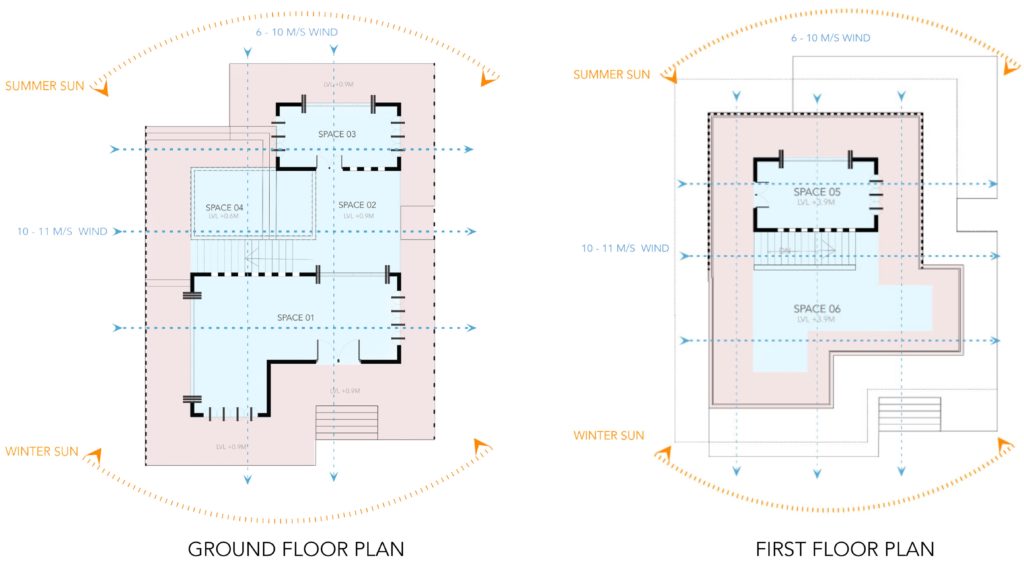
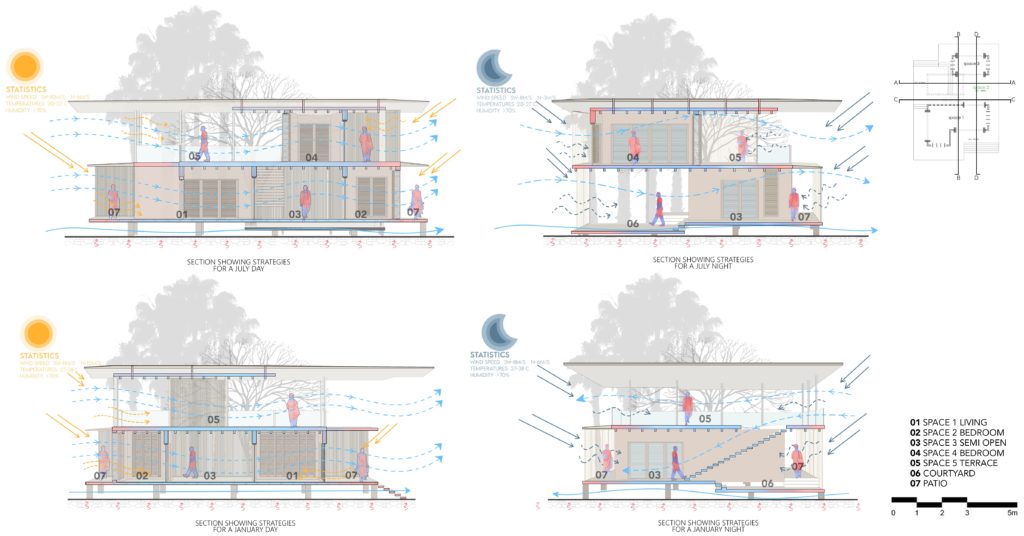
The module was designed keeping in mind several climatic data for the site. This was reflected through the design of the roof, the large patios surrounding the house, the porous fenestrations, the courtyards, overhangs and the stilts. These ensured that the structure’s facade was designed specifically for every requirement.
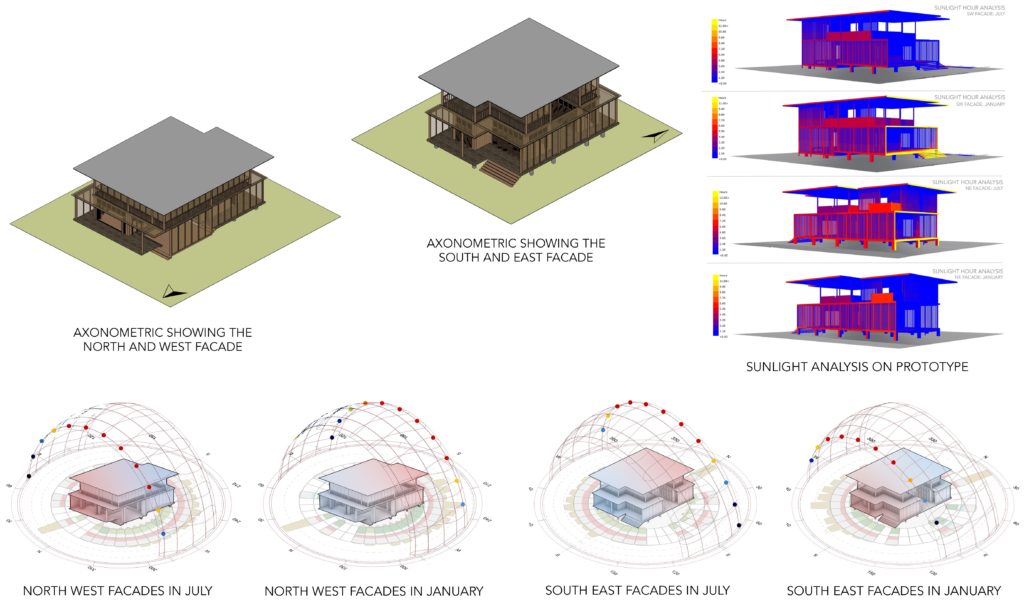
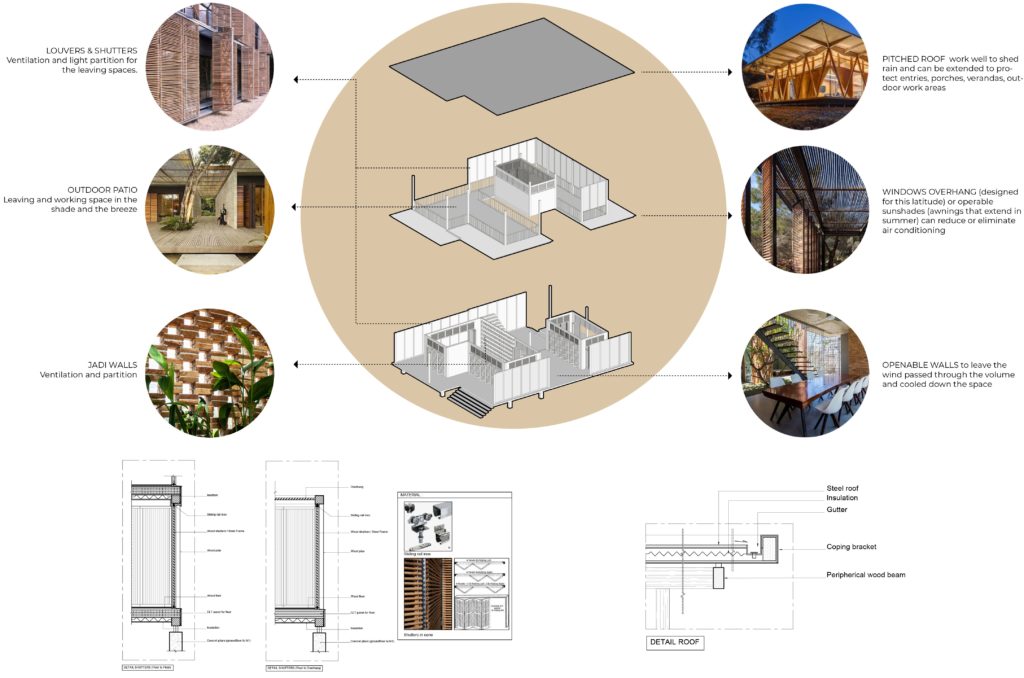
The primary material is that of Timber, additionally, cane is also used as a porous material that allows for easy ventilation and sun shading. The materials are chosen based on the location and proximity to the site. These materials have been acclimatized to the climate and have been used in the vernacular architecture of Ghana. The wooden fins and the design features are fit for ensuring that the structure is thermodynamically designed to allow for ideal internal thermal comfort.
CLIMATIC STRATEGIES IN MASSING
The learning from the prototype are now applied at a larger scale.
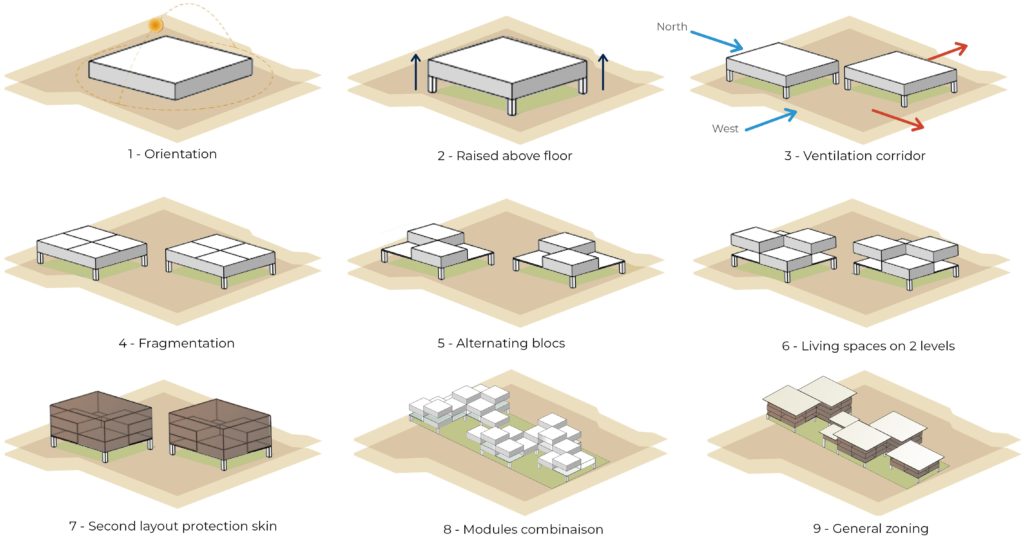
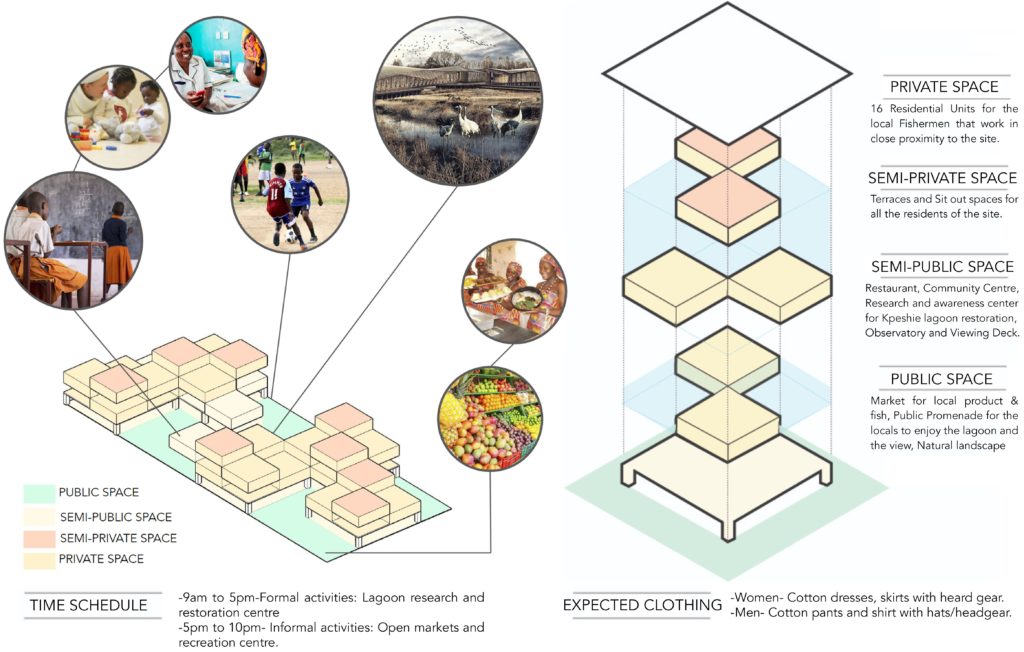
The design reflects the transition from public to semi-public to semi-private to private. This patten is also observed in the traditional layouts and is used as the guiding principle for the zoning and scheming of the design. This is then applied to the grid derived from the form development and creates the different layers of the structure to highlight the open spaces and patios.
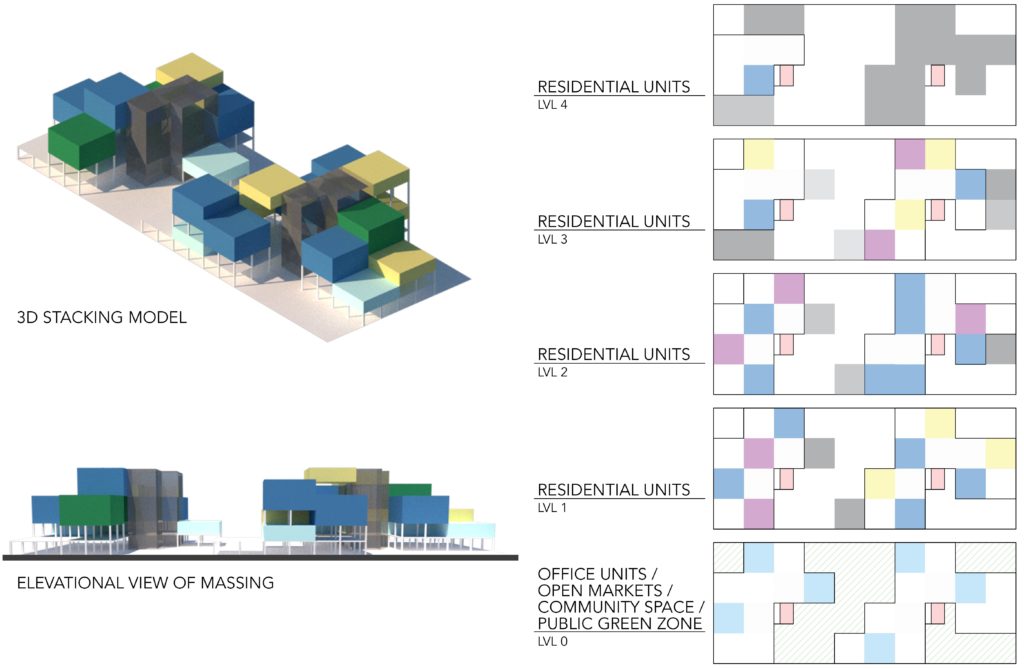
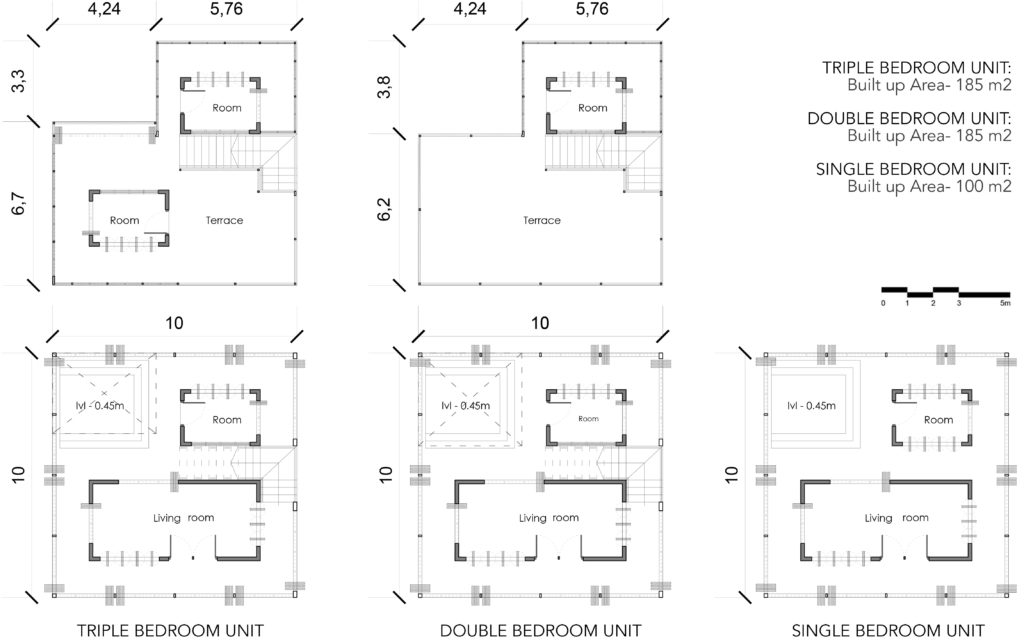
Each unit is designed keeping the strategies applied in the prototype and in doing so each unit has a private courtyard and additionally a semi private courtyard. The primary public functions are spread across the ground floor and are create a throughfare that allows for the functions to blend into one another. Each unit is surrounded with a secondary facade that aids in the correct sun shading and ventilation.
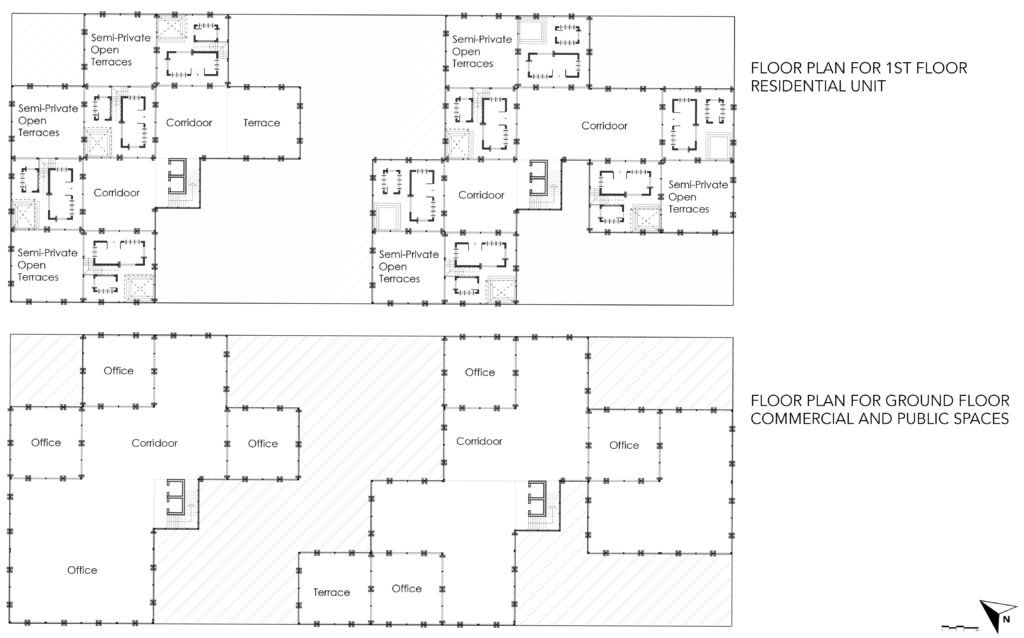
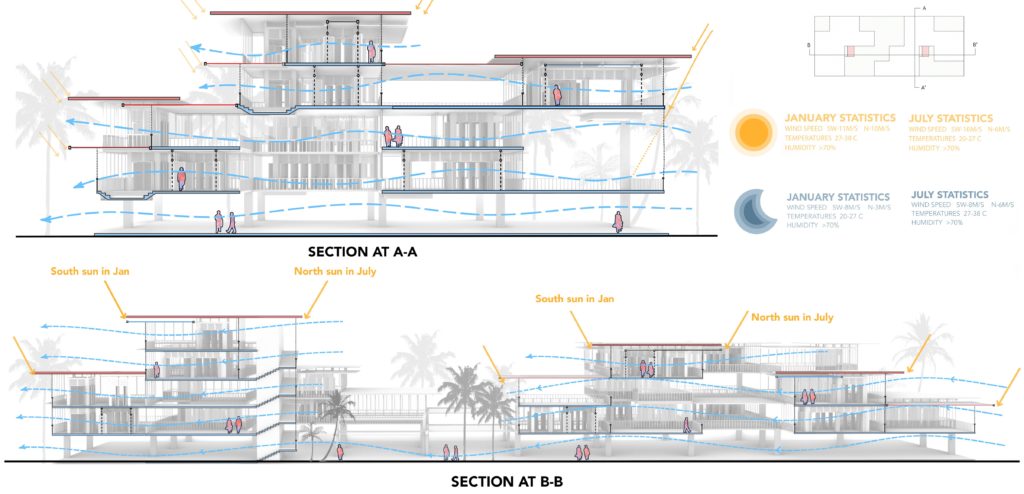
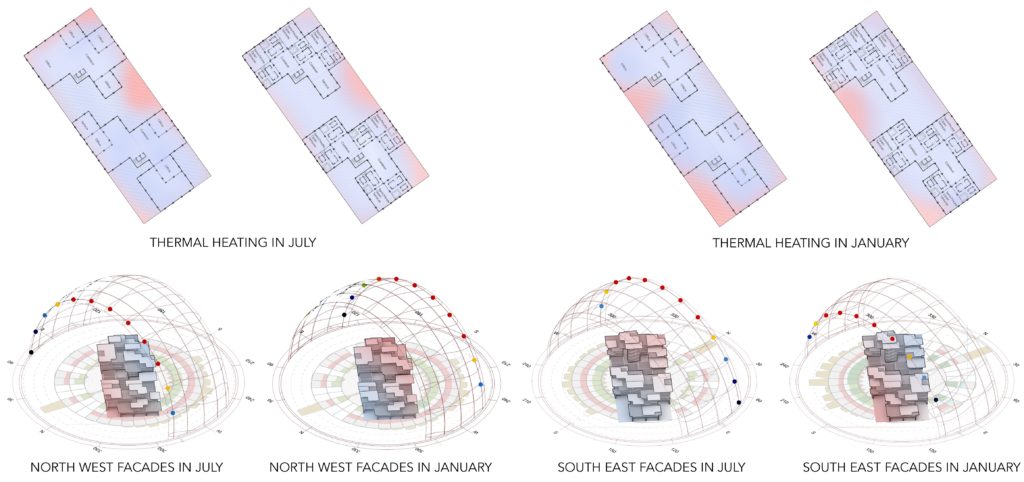
Through the climate analysis it is made clear that the strategies applied for the understanding of thermodynamic fabrications shows that the structure maintains ideal and comfortable temperatures for its users both internally and externally.
Through the Thermodynamic workshop with Javier, we learnt how to design holistically based on the site climate, context and prioritizing the thermal comfort and achieving sustainability through the lenses of thermodynamics. Allowing architecture to unite people, culture, traditions, activities, materials and geography. The aim is to use vernacular ideologies retrofitted into the modern world and creating a synergy between Man, Nature and Architecture.

